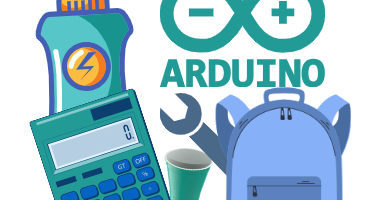It’s a task often avoided by people who ride bikes. It stems from the “if it ain’t broke, don’t fix it” mentality; if the wheels spin, it’s good to go. This is not always the best mindset, especially for anything mechanical. Preventative maintenance is required to prevent catastrophic failure later on, which could cost severe downtime and money. This edition of The Bike Lane will talk about simple things anyone can perform to prolong the life of their bicycle, improve pedal efficiency, and if required, repairing critical parts.
The first thing someone riding a bike should regularly check is the tire pressure. It seems obvious but I’ve seen people riding on two flat tires and when I mentioned it to them, they were shocked. Properly inflated tires will greatly improve pedal efficiency and road traction, which will lead to a more enjoyable commute. There is a world of difference between riding on flat and inflated tires. The desired tire pressure will vary depending on the tire, but luckily this value is written on the sidewall of every tire. Sometimes it’s only written on one side so make sure to check both sides. If you’ve never looked at the sidewall of a bike tire, there will be a lot of confusing numbers. Typically, the tire size will be labeled first. This will usually be in the form 26 x 2.10 which means that the tire is 26 inches in diameter and 2.10 inches in width. Many other tire sizes are out there like 29 inches in diameter for mountain bikes and 700c for road bikes. The important information will often, but not always, be located after the tire size. The tire pressure typically be in units of psi, but sometimes it’s in bar or kPa. Once the proper tire pressure is known, the next step is to determine the valve type. There are two valve types on bicycles: Schrader and Presta. The Schrader valve is the same valve found on car tires. Schrader valve equipped tires can be inflated for free at gas stations. Presta valves are found on higher end bikes and they can hold more pressure than Schrader valves. They will require a bike pump. Most modern bike pumps do come equipped with valve heads that are both Schrader and Presta compatible.
The most important safety feature on a bicycle is its brakes. Properly working breaks should be able to lock up both wheels when they are squeezed hard enough. If wheel lock up is not possible, then your brakes might need an adjustment or your brake shoes might need to be replaced. There are many different types of bike brakes but all function the same way. A mechanism is used to move the brake shoe inward towards the rim of the wheel or towards a disc mounted near the hub. When breaks are in the open position they should be adjusted as close to the rim or disc as possible without actually touching the surface when the wheels are spinning. Since there are so many different types of bicycle brakes I will not be going through how to properly adjust each one. One resource I recommend is sheldonbrown.com. This site has extensive tutorials on proper maintenance on every type of braking system.
The drivetrain is another component of the bicycle that should be looked after regularly. The drivetrain typically consists of the chain, the front chainrings, the rear cassette, and their respective derailleurs. Keeping the chain clean and well lubricated is very important to a long lasting and efficient drivetrain. Derailleurs are what most modern bikes use to shift gears. Weird noises coming from the gears or chain is an indication from your bike that it needs attention. This can sometimes be caused by a misaligned derailleur which is set between sprockets. The chain jumps between two sprockets and causes jagged pedaling. There are barrel adjusters near the shifters or near the derailleur that can be turned to make these minute adjustments. When a bicycle is operating properly the pedals should turn smoothly and quietly throughout the pedal stroke. If you have these problems with your bike take it to the Bike Center in the dark corner of the SLC basement and someone can show you how to repair the issue as well as use any tools that might be required. They are open Tuesdays through Thursdays from 11:30AM to 7:00 PM.
Bicycles are not complicated machines. With a little practice anyone can repair their bike by themselves. Performing routine maintenance, such as lubing the chain, can greatly improve the life of your bicycle and increase the enjoyment of riding every day.




Leave a Reply